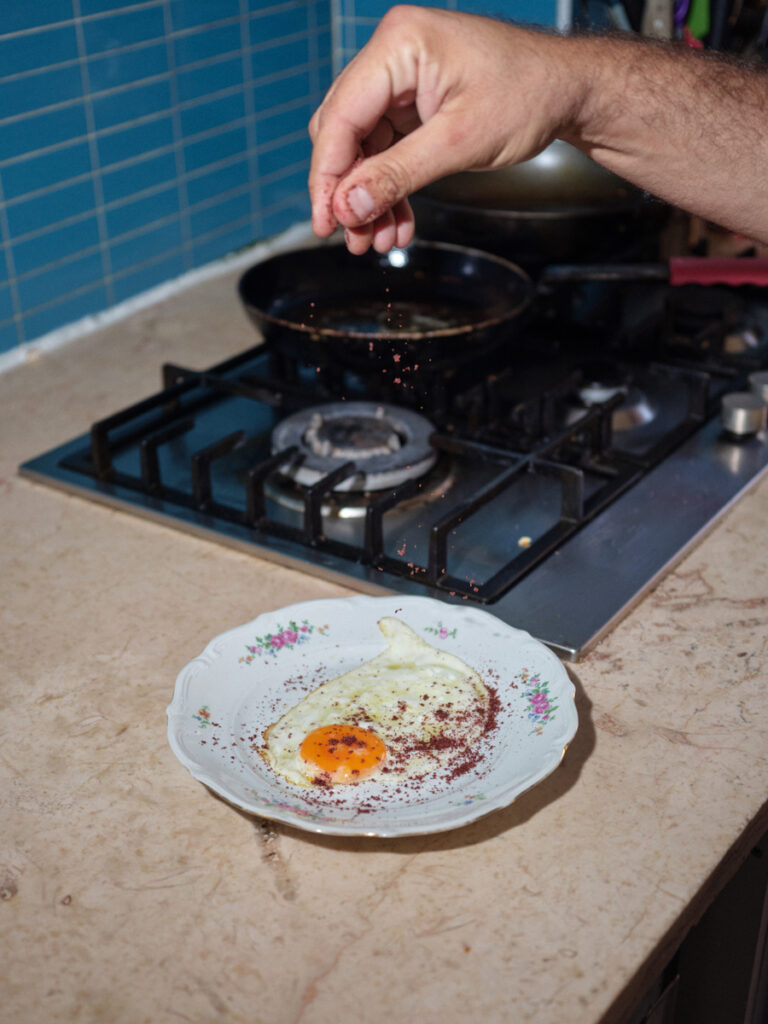Originally published in Apartamento magazine issue #33
When I think of kitchens, my mind splits between the warm nostalgia of home kitchens and the efficiency of colossal metallic restaurant kitchens, one a living spice master’s cave, the other an almost clinical, cold, stainless-steel temple. What a dilemma.
My first memories are of my grandmother Julia’s kitchen, of the three-seater table where we sat near the cupboard with the zaatar and zeit bowls with dibes and tahinia within reach. For breakfast, my grandmother fried eggs in olive oil for me and my grandfather.
Her kitchen fascinated me; it had a first room with a sink, a fridge, cupboards, and a marble counter, which led to a second room with the stove, the oven, another sink, that small table, and a door to an exterior balcony with a barbecue. Years and years later, I realised that her kitchen was divided in the most logical way possible. A first room where produce arrived, was washed, and stored, which later doubled as the space where all the food was plated and sent off to the dining room. The second room was where all the cooking happened. This sanctum sanctorum held the table where very few were allowed to eat. It always felt magical to be in that space where my Teta Julia would often honour me with a spoonful of what she was preparing, teaching me with a continuous stream of stories about the family, about Bethlehem, about Palestine, about antiquities and art.






 close
close